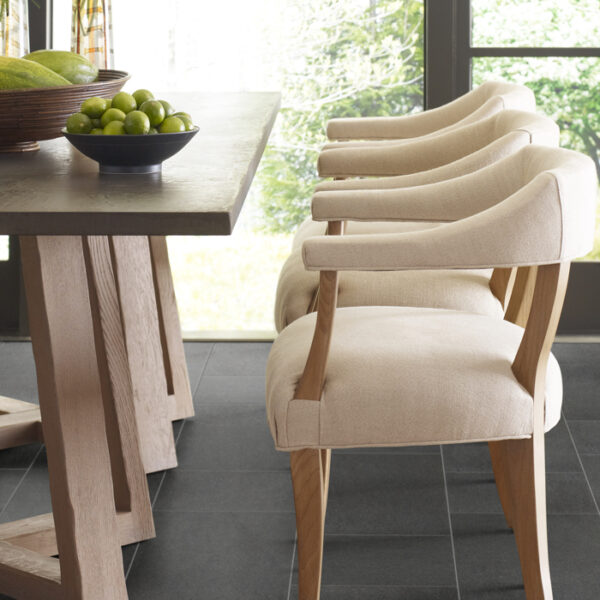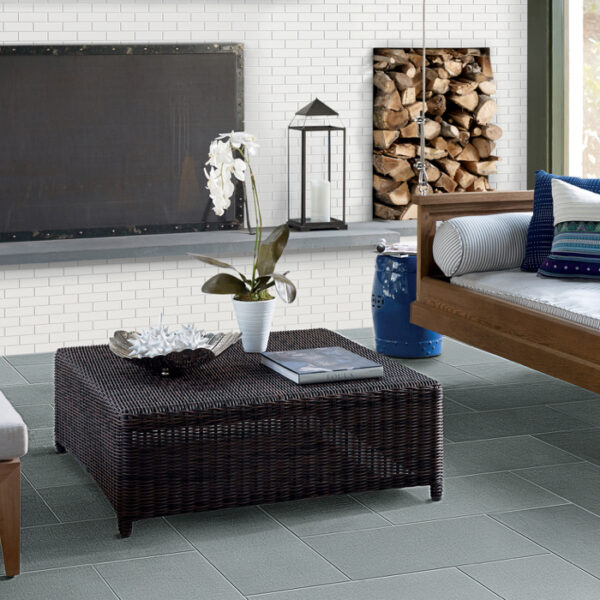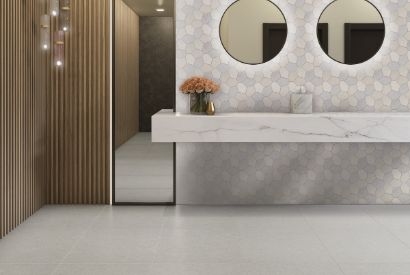Calibrated Tile
Calibration is sorting process manufacturers may use to ensure all tiles within packaged boxes are dimensionally consistent.
In the manufacturing process, unfired ceramic tiles are nearly identical in size when they exit the press, but the firing process in the kiln will cause the tiles to shrink–perhaps at slightly different percentages from piece to piece. Through calibration, manufacturers sort tiles based on finished size.
Tiles are commonly grouped into two to four different calibers based on strict sizing requirements of the industry. Calibrated tiles are typically allowed no more than +/-0.5% variation from the average dimension of the corresponding caliber, not to exceed +/- 2mm. Calibrated tiles may be available at price points that fit more budget conscious projects.
Crossville’s Basalt and Ready to Wear collections are examples of calibrated tiles.

Rectified Tile
Rectified tiles, on the other hand, are fired and then ground to size. This is done to achieve exacting standards in size consistency. Rectified tiles’ edges are precisely, mechanically finished for uniformity, ensuring the size is more precise from piece to piece within a product line.
The uniformity of rectified tiles provides enhanced ease of installation and can simplify installing patterns and unique tile designs. Rectified tiles’ exact edges may allow for smaller grout lines (Crossville recommends a minimum 3mm grout line) compared to the edges of non-rectified tiles. If thin grout lines are desired for an installation, it is recommended that rectified tiles be specified.
Crossville’s Bohemia and Astral Plane porcelain tile collections are examples of rectified tiles, which allow for installations with smaller grout lines.

Bohemia

Astral Plane
To ensure the best possible installation outcomes, be sure to learn if your tile is rectified or calibrated. Crossville prioritizes full disclosure and product education, so we give the details you need on all product information, whether in print or online.








